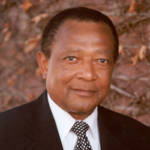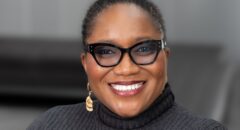 As the leader of the National Medical Association, I have the responsibility to provide a perspective to our constituents on key issues in Medicine that are important to us and to the patients whom we serve. One of those issues is TRUST, which has special meaning to people who have been subjected to so many abuses and indignities over the past 400 years.
As the leader of the National Medical Association, I have the responsibility to provide a perspective to our constituents on key issues in Medicine that are important to us and to the patients whom we serve. One of those issues is TRUST, which has special meaning to people who have been subjected to so many abuses and indignities over the past 400 years.
In the tradition and in memory of the late legendary Howard University School of Medicine professor, civil rights activist, former NAACP president, past president of the National Medical Association, philosopher, and my personal mentor and hero, W. Montague Cobb, MD, Ph.D, who was also Editor Emeritus of this Journal, I submit the following perspective on this topic, which will be incorporated into my forthcoming book, Blacks in Medicine: Clinical, Demographic, and Socioeconomic Correlations (Springer Science & Media, 2017).
II. Building Trust
What are the basic tenets of trust? They include dependability, reliability, respect for privacy, decency, belief in the abilities and good intentions of the providers of care, and a feeling that the patient will be treated with dignity and proper......concern.
The historical backdrop that has been presented above illustrates that, in the case of the black patients, these ingredients and necessary precursors of trust have been painfully missing.
In order to build trust, it is necessary that we must first correct this situation, which means that we have to begin by acknowledging its existence. Denial of the transgressions of history must be eliminated, starting with the proper education of practitioners and
students of medicine.
In the case of medical practitioners, it is important for them to be re-educated about the cultural, ethnic, racial, and religious distinctions and differences that characterize minority patients. As a first step, these practitioners need to learn what cultural diversity is and how to develop cultural competence. For example, they must learn that there are differences in the way that illness and disease are perceived by different ethnic groups, and also in the way that diseases are expressed.
A patient who is of Maya Indian origin who was born in Zincantan in the highlands of Chiapas, Mexico might not understand illness in the orthodox Western context, and instead may think of disease as a foreign process or spirit invading the body.
Another example is the Haitian patient who comes to the American physician with......acute renal failure after being treated by her voodoo priest with kerosene-soaked sugar cubes for a cold; the patient believes that the medical problems she is experiencing are caused by evil spirits.
In addition, representatives of certain ethnic groups may not respond to treatment in the same way that other groups may. Some drugs used to treat tuberculosis such as Isoniazide, for instance, may not work as well in black patients as in whites. Such differences might be caused by what are called genetic polymorphisms. And in the treatment of hypertension, certain medications which focus on blocking the neurohormonal axis such as angiotensin converting enzyme inhibitors and beta-blockers may not reduce blood pressure to goal levels as readily in African Americans as in Caucasians when those medicines are used as monotherapy.
Some Chinese patients may have an exaggerated response to the beta-blocker propranolol, to which they may exhibit an unusual sensitivity. There are many other examples of differences which can affect clinical outcomes between different groups.
The main thing is that doctors must realize that the patient must first be assessed according to the cultural, racial, ethnic, and other special characteristics that he or she brings to the clinical setting. It has to be understood that “one size does not fit all”, and that treatment has to be tailored for the individual, or personalized.
Once the practitioner has been properly educated about the principles of cultural competence, he should then concentrate on learning the methods of approaching the patient. The most important facet on which to concentrate is effective communication, both non-verbal and verbal.
Non-verbal communication refers to elements such as looking the patient in the eye, and expressing an attitude of welcome and genuine interest in the patient’s problem. As Sir William Osler said, “it is more important to consider what sort of patient has a disease, rather than what sort of disease the patient has”. Just the knowledge that the doctor is focusing on YOU can be a tremendous instrument for building trust. Another element of non-verbal communication is shaking hands with the patient. This can provide an initial point of physical contact between doctor and patient and serves as an “ice-breaker”.
Verbal communication is important, too. This includes elements such as the way the doctor greets the patient. The greeting should always be cheerful, and the salutation should include addressing the patient by the last name, such as, “Good morning, Ms. Jones. I am Dr. Smith.” This immediately shows respect for the patient and verbally indicates the fact that the doctor is interested in the patient.
The doctor should not address the patient by his or her first name unless the doctor requests and receives permission to do so. Following the salutation, the doctor should ask the patient for a brief description as to why he or she is there, after which the doctor should explain what the patient should expect to happen such as the performance of a medical history and a physical examination.
Knowing what is going to happen puts the patient at ease and makes him or her more comfortable with the physician. This is an excellent way to build trust.
I have heard many patients and also some doctors complain about......the new instruments of Health Information Technology such as electronic health records (EHR) devices that they feel impose a communications barrier between doctor and patient.
Although these instruments increase the efficiency ofthe doctor-patient encounter and of record-keeping, many think that they impair the person-to-person contact that is so important in building trust.
There are many other examples of ways in which trust can be built. Once established, it must be maintained. We will now explore how this can be accomplished.
 Richard Allen Williams, MD, FACC, FAHA, FACP is Clinical Professor of Medicine, UCLA School of Medicine, President/CEO, The Minority Health Institute, Inc., Founder, Association of Black Cardiologists Los Angeles, California and the 117th President, National Medical Association.
Richard Allen Williams, MD, FACC, FAHA, FACP is Clinical Professor of Medicine, UCLA School of Medicine, President/CEO, The Minority Health Institute, Inc., Founder, Association of Black Cardiologists Los Angeles, California and the 117th President, National Medical Association.









